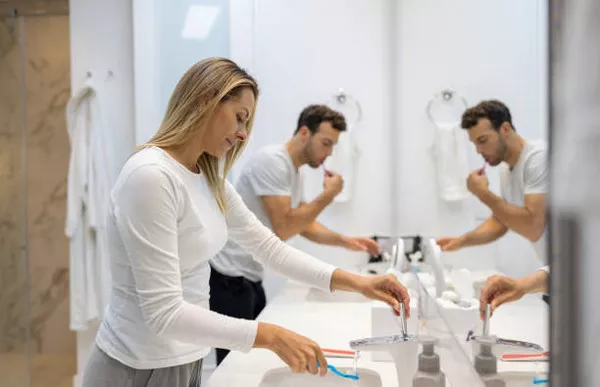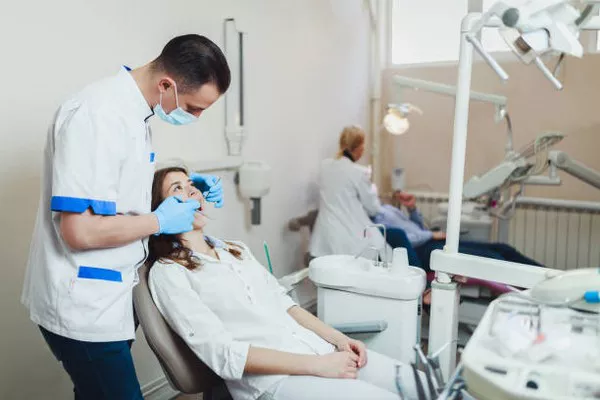Teeth whitening has become increasingly popular in recent years, with many people looking for ways to enhance their smile and boost their confidence. LED teeth whitening is one of the most effective and efficient teeth whitening methods available today, thanks to its quick sessions and long-lasting results. However, it is essential to know how often you should use LED teeth whitening to avoid potential risks and side effects. In this article, we will examine the factors that influence how often you can use LED teeth whitening and provide some useful tips for achieving a brighter, healthier-looking smile.
Factors That Influence How Often You Can Use LED Teeth Whitening
The intensity of the LED lights
The intensity of the LED lights used in teeth whitening devices plays a significant role in determining how often you can safely use them. High-intensity LED lights can cause tooth sensitivity and damage to the enamel if overused. It is essential to follow the manufacturer’s instructions carefully and avoid using the device for longer than recommended.
The concentration of the whitening gel
The concentration of the whitening gel also affects how often you can use LED teeth whitening. Higher concentrations of peroxide can lead to increased tooth sensitivity and gum irritation. It is best to start with lower concentrations and gradually increase them as needed, depending on your level of staining and sensitivity.
Your overall oral health
Your overall oral health plays a crucial role in how often you can use LED teeth whitening. People with existing dental issues, such as cavities or gum disease, should consult with their dentist before undergoing any teeth whitening treatment. It is also important to maintain good oral hygiene habits, such as brushing and flossing regularly, to minimize the risk of tooth decay and gum disease.
Recommended Frequency for Using LED Teeth Whitening
There is no one-size-fits-all answer to how often you can use LED teeth whitening. The frequency of treatment depends on several factors, including the severity of your staining, the concentration of the whitening gel, and the intensity of the LED lights used in the device.
In general, it is recommended to use LED teeth whitening devices no more than once a week. This allows enough time for your teeth to recover from any potential sensitivity or irritation caused by the treatment. It is also essential to maintain proper oral hygiene habits and avoid consuming foods and drinks that can stain your teeth, such as coffee, tea, and wine.
Tips for Achieving Optimal Results with LED Teeth Whitening
Use a desensitizing gel
If you experience tooth sensitivity after using an LED teeth whitening device, try using a desensitizing gel. These gels contain ingredients that can help soothe and protect your teeth from sensitivity and discomfort. Apply the gel before or after your whitening treatment, depending on the manufacturer’s instructions.
Choose a reputable brand
When selecting an LED teeth whitening device, choose a reputable brand that has been clinically tested and proven effective. Look for products that have received approval from reputable dental associations, such as the American Dental Association (ADA).
Follow the manufacturer’s instructions
Always follow the manufacturer’s instructions carefully when using an LED teeth whitening device. Overuse or misuse of the device can lead to tooth sensitivity, gum irritation, and other potential risks and side effects.
Maintain good oral hygiene habits
Maintaining good oral hygiene habits is essential for achieving optimal results with LED teeth whitening. Brush and floss regularly, and visit your dentist for regular check-ups and cleanings. Avoid consuming foods and drinks that can stain your teeth, and rinse your mouth with water after eating or drinking anything acidic.
Do LED lights actually whiten teeth?
LED lights are often used in conjunction with teeth whitening treatments to accelerate the bleaching process. They work by activating the hydrogen peroxide gel that is applied to the teeth during the treatment. However, the LED light itself does not whiten teeth. It simply helps to speed up the chemical reaction of the whitening gel, which can lead to faster and more dramatic results. So while LED lights can be a helpful addition to a teeth whitening treatment, they do not actually whiten teeth on their own.
Conclusion
LED teeth whitening is an effective and efficient way to achieve a brighter, healthier-looking smile. However, it is essential to use the device safely and follow the recommended frequency for use to minimize potential risks and side effects. By choosing a reputable brand, following the manufacturer’s instructions, and maintaining good oral hygiene habits, you can enjoy long-lasting results with minimal discomfort or sensitivity. Consult with your dentist if you have any concerns or questions about using LED teeth whitening devices.
Related Topics:





























